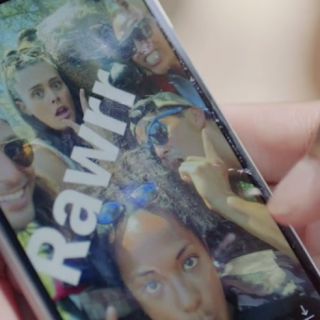For a company recently compared to a virus, Facebook itself is apparently none too healthy. A crew of self-appointed doctors – from the Twitter commentariat to Ivy League academics – are lining up to test its vital signs, and pronounce the outlook worrying. But after this week’s announcement that the company’s revenue reached $7.87 billion in 2013 – a 55% year on year growth – are these concerns valid? Neil McCarthy, Commercial Director at global digital performance marketing agency, Displaying Ads, investigates.
The diagnoses began last year, partly in response to figures from comScore and SocialBakers suggesting a plateauing or decline of Facebook usage across a range of key markets.
The already-infamous Princeton study – ‘Epidemiological Modeling of Online Social Network Dynamics’ – may have been couched in specialist language and apparently abstruse mathematical analysis, but its conclusions were definite. It predicted ‘Facebook will undergo a rapid decline in the coming years, losing 80% of its peak user base [by] 2017’.
Separate research published in December 2013, Global Social Media Impact Study, focused on EU countries, came to similar conclusions. According to the study, users, particularly those in the hallowed youth market, are deserting the networking site in droves for newer social platforms. As the study’s research lead said, ‘Facebook is simply not cool anymore’; in even starker terms, he suggested ‘Facebook is not just on the slide – it’s dead and buried’.
These conclusions have been refuted on statistical and scientific grounds, with many questioning the relevance of epidemiological models for predicting social network trends. Facebook, quite amusingly, applied the same methods of analysing Google search data, used by Princeton researchers, to show that Princeton would soon go extinct itself. A strong way of demonstrating ‘some methods of analysis lead to pretty crazy conclusions’.
But the Princeton study’s conclusions can be challenged on more fundamental grounds, which get to the core of how Facebook is used, and by whom.
MySpace was a key reference point for the Princeton researchers. But this comparison elides a fundamental difference between the platforms – the move to mobile.
Though MySpace Mobile launched as far back as 2006, it never took off as a mobile platform in the way that Facebook has. Along with revenue levels, Facebook’s Q4 2013 data also reveal that mobile daily active users rose to 556 million, a growth of 8% from the previous quarter. And 945 million people worldwide check Facebook on their mobile at least once a month. That’s around 1 in 7 people – globally, on mobile alone. And these numbers are only going to grow.
The move to mobile is closely linked to a second key difference between the social networks. MySpace never established a significant audience outside the youth market, whereas Facebook’s penetration is universal. As far back as 2011, a study suggested that over half of UK pensioners had Facebook accounts. Even if the youth market is saturated, Facebook’s roots into everyone’s social lives are much deeper and more encompassing than that of MySpace, so the comparison is misleading at best.
In searching for analogies to describe Facebook’s movement from its original heartland of in-the-know youth to cross-demographic ubiquity, we would be better looking to Google.
While neither of these digital giants were the first in their respective markets – social and search –, both came to represent them in the popular mind.
Both enjoyed early years’ growth so meteoric as to be unsustainable. In 2010-11, Facebook was growing at a rate of 20 million new users per month, comfortably outstripping the global annual births of around 134 million in 2011. Short of colonising new planets, this level of growth clearly couldn’t last indefinitely.
Finally, given their insatiable pursuit of new markets, carnivorous attitude to other digital companies, and resulting proliferation of new products and services, both Facebook and Google were inevitably subject to accusations of having ‘lost their focus’, and dire prognostications for their future. And where are all of the feted Google killers now? The Wolfram Alphas? The Cuils and Blekkos?
They will continue to face challenges, but Facebook and Google’s shared capacity to adapt to new conditions and diversify their core businesses is a sign of strength, not weakness. Each can draw on huge cash reserves and well-developed internal cultures of innovation to squeeze out or envelop competitors.
Facebook has already navigated some of the key strategic issues in its space. Although the $1 billion price tag was viewed sceptically by commentators at the time, the April 2012 acquisition of Instagram showed the company’s willingness to invest big in mobile – an investment that promises real returns with Instagram’s continued growth and monetisation. With the announcement that over 50% of their revenue now comes from mobile advertising, Facebook increasingly seems to have successfully turned a potential threat into an opportunity.
As the example of Google shows, once a platform has been adopted people are very resistant to switching – so long as it continues to develop and respond to its users’ needs.
With a total user base that encompasses around a sixth of the world’s population, combined with a proven track record of resilience, adaptation and innovation, Facebook seems set for a healthy life for years to come.
This article first appeared in Media Week, Campaign and Brand Republic.



